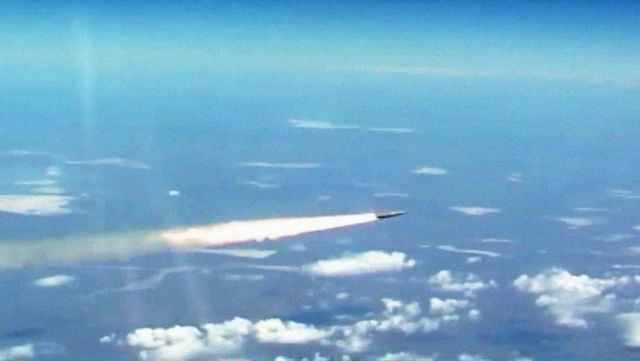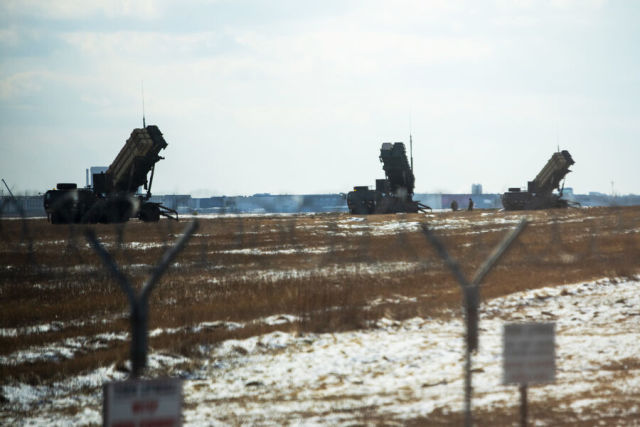Colonel Khodarenok: Ukrainian air defense systems are not capable of shooting down Daggers and Iskander-M missiles
At the end of last year and the beginning of 2024, the Armed Forces of the Russian Federation inflicted several dozen group and one massive strike with long-range naval and air-based weapons on objects of the military-industrial complex of Ukraine. How the Ukrainian air defense system works, whether the data on its effectiveness is true and why Kiev cannot shoot down Russian Daggers is in the material of the military observer of Gazeta.En" by Mikhail Khodarenka.
To begin with, let's explain what kind of strikes there are in principle, since even in the expert community there is a certain misunderstanding of what massive and group strikes are.
Strikes can be strategic, operational and tactical in scale. Depending on the means used: nuclear (nuclear missile), fire (rocket, rocket artillery, aviation), strikes by troops (forces). According to the number of participating funds and affected objects - massive, group, single.
Massive strikes are carried out by operational and operational-strategic formations (front, army), and group strikes are carried out by operational-tactical (corps) and tactical formations (division).
In this case, we will analyze only the typical algorithm of the work of the Ukrainian military and the media in the case of missile and air strikes by the Armed Forces of the Russian Federation, and we will do this with just two examples - the attacks on December 29, 2023 and January 2, 2024.
What happened on December 29, 2023
As you know, the first massive missile and aviation strike (MRAW) by Russian troops on objects in Ukraine was carried out at about three o'clock in the morning, Kiev time, on December 29, 2023. But already at 9:30 on the same day (and special attention should be paid to this period), the official representatives of the Armed Forces of Ukraine reported that Russia had launched 158 means of air attack (SVN). Of these, five X-47M2 Dagger missiles, 14 S-300/400 SAMS, 36 Shahed136/131 UAVs (that is, Geranium 2), eight X-22/32 missiles, 90 X-101/555/55 air-launched cruise missiles, one X-59 missile, four X-31P missiles, 14 Iskander- M".
As for the effectiveness of the Ukrainian air defense, Ukrainian sources reported that 87 cruise missiles out of 122, 27 attack UAVs out of 36 were destroyed. In general, both the accuracy and efficiency are simply amazing.
A very simple question arises - but what about at such a speed (and such a time period is really very small from the point of view of a specialist) The APU dealt with the total number of SVN taking part in the strike, and determined the number of affected air objects with an accuracy of one missile (UAV) (moreover, they figured it out even taking into account the fact that the strike was carried out in conditions of organized interference and was very high density in itself). And the APU has no doubts about the types of missiles and drones (again, with precision to a specific unit).
But in such a period of time, you can only collect information from the commanders of anti-aircraft missile divisions and batteries about the number of live fire and spent missiles, but no more.
Further, even taking into account automation tools in air defense units and formations (anti-aircraft missile and radio engineering troops), it is necessary to collect data on the wiring of all air objects from all radar companies (battalions), work out (that is, draw out) an enemy raid scheme, collect shooting cards from all anti-aircraft missile units. They should contain the following data: detected a target (time, range, azimuth, altitude, parameter), opened fire on a target (time, range, azimuth, altitude, parameter), a missile (or a queue of missiles) meeting with a target (time, range, azimuth, altitude, parameter).
Then all these data should be superimposed on each other, confirm the defeat of air objects with objective control data (that is, photographs of indicator screens and data from relevant equipment), collect information about the detected debris of air attack means on the ground (and only in this way (and in no other way) can the type of the affected target be determined), and only then on the basis of such data should be compiled in the final combat report. It is good if this amount of information can be collected, processed and summarized in a day, but sometimes even three days are not enough to understand in detail what happened.
So when the official representatives of the Armed Forces of Ukraine, such as the speaker of the Command of the Air Forces of the Armed Forces of Ukraine, Yuri Ignat, report on the extremely specific results of the work of air defense (up to one means of enemy air attack), and even at a time when, as they say, the smoke after a missile and air strike has not yet dissipated, such reports deserve only one estimate is a hack.
But it is precisely on such reports of the Armed Forces of Ukraine that myths are born about the simply unheard-of effectiveness of the Ukrainian air defense system, which, according to them, is in the range of 0.9-1.0.
Ukrainian sources usually report the damage to infrastructure facilities and military-industrial complex enterprises after the MRAU of Russian troops as follows: residential buildings, maternity hospitals, kindergartens, shopping malls, ground lobbies of metro stations, warehouses were damaged. That is, the Armed Forces of the Russian Federation shot-missed-got into the hospital. And on such facts, a wave then rises about the non-selectivity of Russian strikes and the bestial appearance of the Armed Forces of the Russian Federation.
Please provide figures and facts. But of course there is neither the first nor the second.
And the fact that on December 29, 2023, as a result of a missile strike by the Russian Aerospace Forces, the state joint-stock holding company Artyom in the Shevchenko district of Kiev, specializing in the production of missiles of various classes, instruments and equipment for aircraft, was struck by official representatives of the Ukrainian Air Forces, of course, are silent.
Naturally, there is not a word about the fact that the scientific and production enterprise of the military-industrial complex of Ukraine, the Luch Design Bureau, the developer of the Neptune anti-ship cruise missile, was severely damaged during the strikes on December 29. And these are just two examples, but in fact there are many more.
Of course, not all information should be made publicly available during an armed conflict. But it's probably not worth lying uncontrollably either.
Can the Patriot air defense system shoot down a Dagger missile
Approximately the same picture as with the MRAU on December 29 is observed in official reports of the Armed Forces of Ukraine and publications of the Ukrainian media about the actions of the Armed Forces of the Russian Federation during the strike on January 2, 2024. And this time it's one to one - 99 missiles launched, 72 destroyed the air defense of Ukraine. However, there are also peculiarities - according to Ukrainian sources, on January 2, 10 out of 10 Daggers were successfully shot down by the Armed Forces of Ukraine when repelling an air missile strike.
To shoot down the Dagger, at least anti-aircraft guided missiles with a very specific warhead are needed. Usually missiles are equipped with warheads to defeat aerodynamic targets, that is, the finished striking elements in them are relatively small in size and weight (2-2.5 g). And for the confident defeat of ballistic targets like the Dagger, it requires, as they say, a large fraction of ready-made striking elements. There are no such missiles in Ukraine.
What about the Patriot air defense system? After all, several batteries of this system are in the combat composition of the anti-aircraft missile forces of the Air Forces of the Armed Forces of Ukraine. The MIM-104C/D/E missile defense system and the ERINT anti-missile system can be used to defeat ballistic targets. But there is no exact data that these products were transferred by the United States to the Ukrainians. As well as there is no information that such American missiles are capable of hitting an armored "Dagger" operating in conjunction with electronic warfare, and even more so to cause the detonation of the warhead of the "Dagger".

Image source: Ministry of Defense of the Russian Federation/RIA Novosti
And what do Ukrainians post at their exhibitions as fragments of "Daggers" hit by air defense systems? It is quite possible that the debris is being laid out. Only not from the "Daggers" shot down by anti-aircraft missile systems, but the collected fragments from the X-47M2 missiles at the places where they hit the AFU facilities.
As a conclusion, we can say that the hypersonic X-47M2 and the ballistic missile of the Iskander-M tactical complex represent objects for the Ukrainian air defense that the anti-aircraft missile forces of the Armed Forces of Ukraine are not able to hit at this stage.
The opinion of the author may not coincide with the position of the editorial board.
Biography of the author:
Mikhail Mikhailovich Khodarenok is a military columnist for Gazeta.Ru", retired colonel.
He graduated from the Minsk Higher Engineering Anti-Aircraft Missile School (1976), the Military Air Defense Command Academy (1986).
Commander of the S-75 anti-aircraft missile division (1980-1983).
Deputy commander of the anti-aircraft missile regiment (1986-1988).
Senior Officer of the General Staff of the Air Defense Forces (1988-1992).
Officer of the Main Operational Directorate of the General Staff (1992-2000).
Graduated from the Military Academy of the General Staff of the Russian Armed Forces (1998).
Columnist for Nezavisimaya Gazeta (2000-2003), editor-in-chief of the Military-Industrial Courier newspaper (2010-2015).
Mikhail Khodarenok

